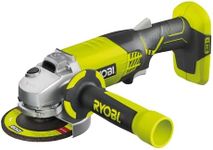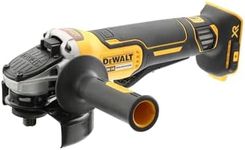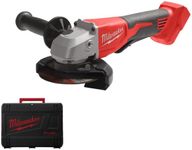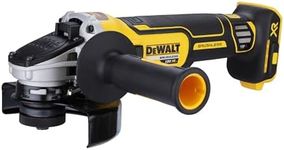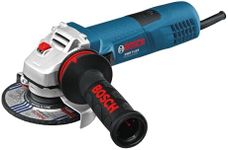Buying Guide for the Best Angle Grinders
Choosing the right angle grinder involves understanding your specific needs and the tasks you plan to undertake. Angle grinders are versatile tools used for grinding, cutting, and polishing, and selecting the right one can make your work more efficient and effective. Consider the type of materials you will be working with, the frequency of use, and the level of precision required. By evaluating these factors, you can narrow down the options and find an angle grinder that best suits your needs.Disc SizeDisc size is a critical factor in determining the capacity and capability of an angle grinder. It refers to the diameter of the disc that the grinder can accommodate. Common sizes include 4.5 inches, 6 inches, and 9 inches. Smaller discs are suitable for precision work and lighter tasks, while larger discs are better for heavy-duty jobs and cutting through thicker materials. Choose a disc size based on the type of work you plan to do; for general home use, a 4.5-inch disc is often sufficient, whereas professional or industrial tasks may require larger discs.
Power SourceAngle grinders can be powered by electricity, battery, or air (pneumatic). Electric grinders are the most common and are suitable for most tasks, offering a balance of power and convenience. Cordless battery-powered grinders provide mobility and are ideal for jobs where access to power outlets is limited. Pneumatic grinders are typically used in industrial settings where a constant air supply is available. Consider where and how you will use the grinder to determine the best power source for your needs.
Motor PowerMotor power, measured in watts or amps, indicates the strength and efficiency of the grinder. Higher power allows for more demanding tasks and longer operation without overheating. For light to medium tasks, a motor with 5 to 7 amps is usually adequate. For heavy-duty work, look for a grinder with 9 amps or more. Assess the intensity and duration of your projects to choose a motor power that will provide the necessary performance.
Speed (RPM)The speed of an angle grinder is measured in revolutions per minute (RPM). Higher RPMs mean faster cutting and grinding, which is beneficial for quick jobs. However, high speed can also lead to less control and more heat generation. Variable speed grinders allow you to adjust the RPM to suit different tasks, providing more versatility. If you plan to work with a variety of materials, a variable speed grinder might be the best choice.
Safety FeaturesSafety features are crucial in preventing accidents and ensuring user protection. Look for grinders with features such as a safety guard, anti-kickback, and a lock-on switch. A safety guard protects you from debris, while anti-kickback prevents the tool from jerking if the disc binds. A lock-on switch allows for continuous operation without holding the trigger, reducing hand fatigue. Prioritize safety features based on your comfort level and the complexity of the tasks you will perform.
Weight and ErgonomicsThe weight and ergonomics of an angle grinder affect its ease of use and comfort during operation. Lighter grinders are easier to handle and control, especially for extended periods. Ergonomic designs with comfortable grips and adjustable handles can reduce strain and improve precision. Consider how long you will be using the grinder and choose a model that feels comfortable and balanced in your hands.

